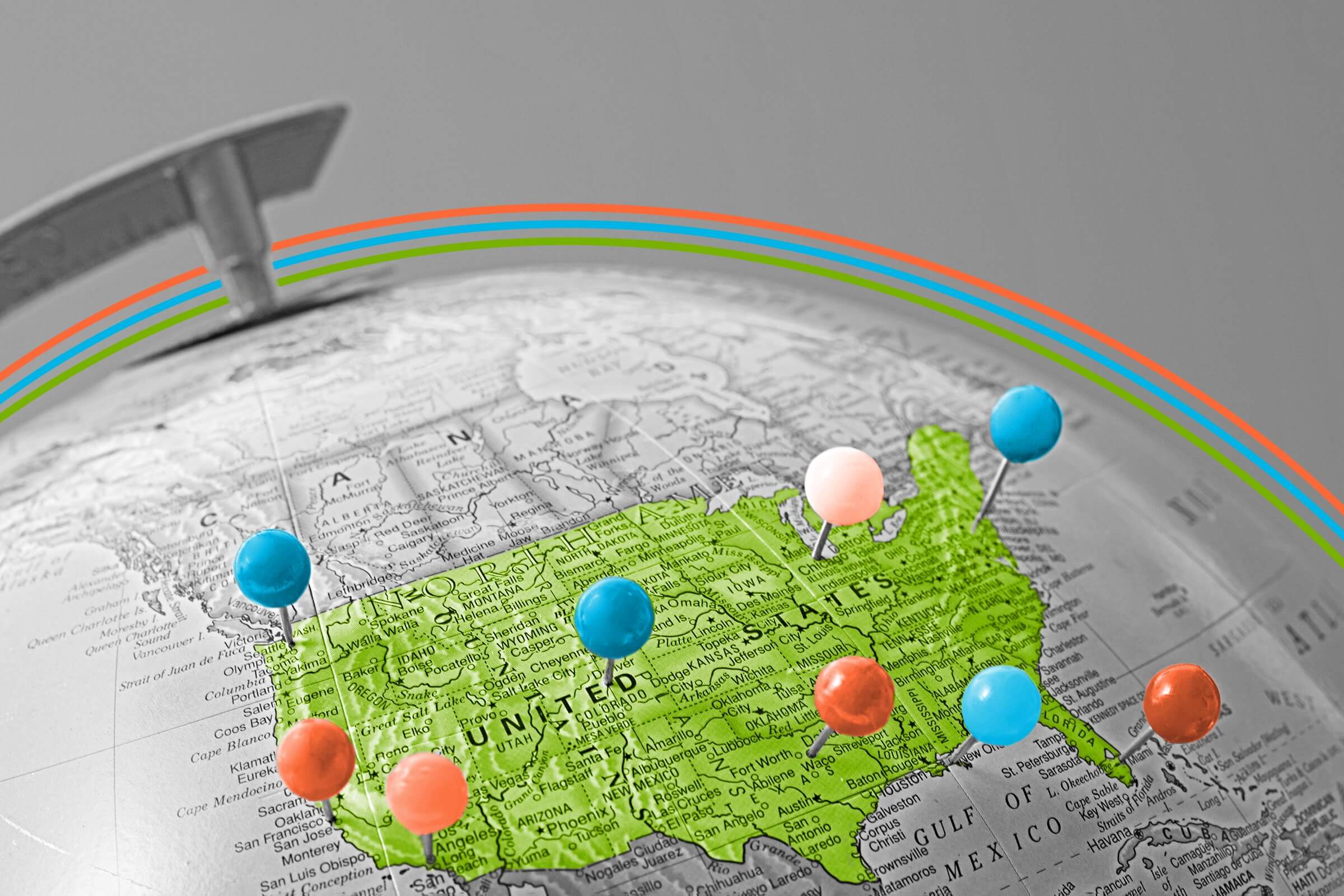
The westernmost and easternmost points of U.S. territory both share the same name.
The shape of the United States has changed over the centuries — including its farthest reaches east and west. Today, the lower 48 states stretch around 3,000 miles, but the true span of the United States has more than tripled thanks to some of the country’s island acquisitions. In the east, the farthest point in the U.S. in relation to the mainland is Point Udall, located on the island of St. Croix in the Caribbean. Strangely, the farthest point to the west — on the remote Pacific island of Guam — is also called Point Udall. Although the namesakes honor two different men, they do honor the same family. Point Udall in St. Croix is named after Stewart Udall, who served as secretary of the interior for Presidents John F. Kennedy and Lyndon B. Johnson. Guam’s Point Udall is named for Stewart’s brother, Morris, who served as a U.S. congressman from Arizona from 1961 to 1991.
Of course, these two seemingly fortuitous monikers are not a complete coincidence. In 1987, the U.S. Congress approved renaming Guam’s Orote Point to Point Udall in full awareness that the easternmost point had the same name. President Bill Clinton even called out this geographic oddity after Morris’ death in 1998, saying, “It is fitting that the easternmost point of the United States, in the Virgin Islands, and the westernmost point, in Guam, are both named ‘Udall Point.’ The Sun will never set on the legacy of Mo Udall.”
A common Hollywood trope is that any crime committed in international waters, i.e., the “high seas,” is somehow exempt from trial and prosecution — but that’s not how it works in real life. In 1982, the United Nations created the Law of the Sea as a sort of “constitution for the oceans.” This law (amended in subsequent years) established sovereignty borders and exclusive economic zones, and defined the boundaries of the high seas. Any crime committed in these waters is subject to the laws of the country that owns the vessel or structure on which it was committed. In other situations, the nations of the people involved in a crime may also claim jurisdiction. If the crime is especially heinous, such as human trafficking or other crimes against humanity, any national or international entity can try the accused due to something called universal jurisdiction.

